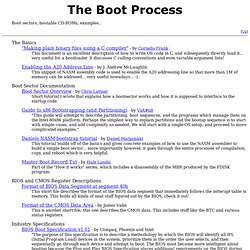

Accuracy takes power: one man’s 3GHz quest to build a perfect SNES emulator. Emulators for playing older games are immensely popular online, with regular arguments breaking out over which emulator is best for which game.

Today we present another point of view from a gentleman who has created the Super Nintendo emulator bsnes. He wants to share his thoughts on the most important part of the emulation experience: accuracy. It doesn't take much raw power to play Nintendo or SNES games on a modern PC; emulators could do it in the 1990s with a mere 25MHz of processing power. But emulating those old consoles accurately—well, that's another challenge entirely; accurate emulators may need up to 3GHz of power to faithfully recreate aging tech. In this piece we'll take a look at why accuracy is so important for emulators and why it's so hard to achieve. Put simply, accuracy is the measure of how well emulation software mimics the original hardware. First, performance. Or consider Air Strike Patrol, where a shadow is drawn under your aircraft. Doing it in software.
OSRC: The Boot Process. The Boot Process Boot sectors, bootable CD-ROMs, examples..

The Basics "Making plain binary files using a C compiler" - by Cornelis Frank This document is an excellent description of how to write OS code in C, and subsequently directly load it... very useful for a bootloader. It discusses C calling conventions and even variable argument lists! Enabling the A20 Address Line - by J. This snippet of NASM assembly code is used to enable the A20 addressing line so that more than 1M of memory can be addresed... very useful nowadays... :) Boot Sector Documentation Boot Sector Overview - by Chris Lattner Short tutorial I wrote that explains how a bootsector works and how it is supposed to interface to the startup code. Guide to x86 Bootstrapping (and Partitioning) - by VaX#n8 "This guide will attempt to describe partitioning, boot sequences, and the programs which manage them on the Intel 80x86 platform.
Daniels NASM bootstrap tutorial - by Daniel Marjamäki Master Boot Record Tut - by Hale Landis. Top 50 Free Open Source Classes on Computer ScienceCUSTOM_TITLE_SEPARATORComtechtor. Computer science is an interesting field to go into.

There are a number of opportunities in computer science that you can take advantage of. With computers increasingly becoming a regular part of life, those who can work with computers have good opportunities. You can find a good salary with a program in computer science, and as long as you are careful to keep up your skills. 30 free programming eBooks - citizen428.blog() Since this post got quite popular I decided to incorporate some of the excellent suggestions posted in the comments, so this list now has more than 50 books in it.

BTW: I’m not very strict on the definition of “ebook”, some of them are really just HTML versions of books. [UPDATED: 2012-01-18] Learning a new programming language always is fun and there are many great books legally available for free online. Here’s a selection of 30 of them: Lisp/Scheme:Common Lisp: A Gentle Introduction to Symbolic ComputationHow to Design ProgramsInterpreting Lisp (PDF, suggested by Gary Knott)Let Over LambdaOn LispPractical Common LispProgramming in Emacs LispProgramming Languages. Ruby:The Bastards Book of Ruby (suggested by Dan Nguyen)Clever Algorithms (suggested by Tales Arvelos)Data Structures and Algorithms with Object-Oriented Design Patterns in RubyLearn Ruby the Hard WayLearn to ProgramMacRuby: The Definitive GuideMr.
Erlang:Concurrent Programming in ErlangLearn You Some Erlang for Great Good.
Manual/Vitals/Quick render. Introduction to Computer Science and Programming.